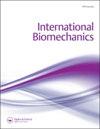Pelvic belts and pregnancy-related pelvic girdle pain: influence on temporal and spatial gait parameters
Q2 Medicine
引用次数: 2
Abstract
ABSTRACT The aims of this study were to analyze temporal and spatial parameters of gait during pregnancy in women with and without PGP, to evaluate the effect of pelvic belts on temporal and spatial gait parameters, and to compare two types of belts. A total of 46 pregnant women with PGP, 58 healthy pregnant women and 23 non-pregnant women were recruited. Temporal and spatial parameters were analysed by an walkway. Two pelvic belts for pregnant women were used. An analysis of variance for repeated measures were used. In pregnant women with PGP, compared to healthy pregnant women, gait cycle and stance phase times were lower and single support time was higher. Compared to the non-pregnant women, gait velocity and step length were lower. Stance phase and double support times were higher. During pregnancy, wearing a pelvic belt modified gait velocity, single support phase, step length, step width, stance phase and toe in/out in pregnant women with PGP. Gait adaptations in pregnant women with PGP showed nearly the same changes found in women without PGP. The belts had an effect on gait in pregnant women with PGP, probably through a biomechanical and proprioceptive mechanism.骨盆带和妊娠相关的骨盆带疼痛:对时间和空间步态参数的影响
摘要本研究的目的是分析妊娠期PGP和非PGP妇女步态的时间和空间参数,评估骨盆带对时间和空间步态参数的影响,并比较两种类型的骨盆带。共招募了46名患有PGP的孕妇、58名健康孕妇和23名非孕妇。通过人行道分析了时间和空间参数。使用了两条孕妇骨盆带。采用重复测量的方差分析。在患有PGP的孕妇中,与健康孕妇相比,步态周期和站立阶段的时间较低,单次支撑时间较高。与未怀孕妇女相比,步态速度和步长较低。站立阶段和双支撑次数较高。在妊娠期间,佩戴骨盆带可以改善PGP孕妇的步态速度、单支撑阶段、步长、步长、站立阶段和脚趾向内/向外。患有PGP的孕妇的步态适应表现出与没有PGP的妇女几乎相同的变化。腰带可能通过生物力学和本体感觉机制对PGP孕妇的步态产生影响。
本文章由计算机程序翻译,如有差异,请以英文原文为准。
求助全文
约1分钟内获得全文
求助全文
来源期刊

International Biomechanics
Medicine-Rehabilitation
CiteScore
1.90
自引率
0.00%
发文量
2
审稿时长
17 weeks
期刊介绍:
International Biomechanics is a fully Open Access biomechanics journal that aims to foster innovation, debate and collaboration across the full spectrum of biomechanics. We publish original articles, reviews, and short communications in all areas of biomechanics and welcome papers that explore: Bio-fluid mechanics, Continuum Biomechanics, Biotribology, Cellular Biomechanics, Mechanobiology, Mechano-transduction, Tissue Mechanics, Comparative Biomechanics and Functional Anatomy, Allometry, Animal locomotion in biomechanics, Gait analysis in biomechanics, Musculoskeletal and Orthopaedic Biomechanics, Cardiovascular Biomechanics, Plant Biomechanics, Injury Biomechanics, Impact Biomechanics, Sport and Exercise Biomechanics, Kinesiology, Rehabilitation in biomechanics, Quantitative Ergonomics, Human Factors engineering, Occupational Biomechanics, Developmental Biomechanics.
 求助内容:
求助内容: 应助结果提醒方式:
应助结果提醒方式:


